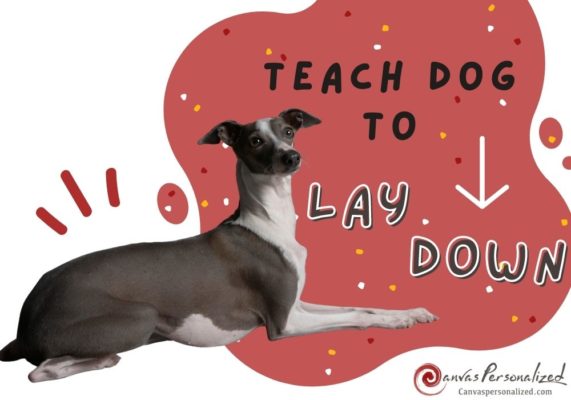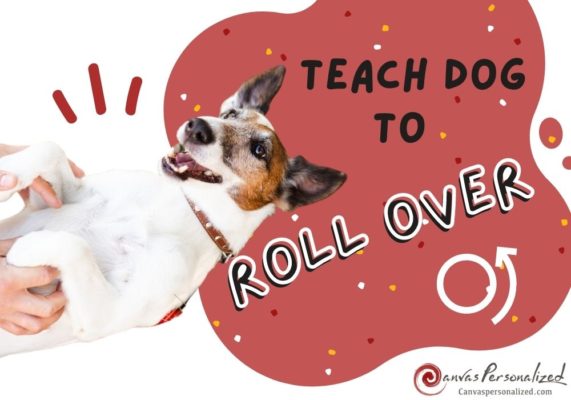People often think bell training for dogs is an excellent way to use the bell to go outside and go potty. Teaching your dog to ring a bell whenever it needs to go outdoors can prevent mishaps and give your pet a simple expression method. On the Canvas Personalized, you’ll find a comprehensive guide on how to train a dog with a bell, along with positive reinforcement.
Benefits Of Bell Training For Dogs
One easy way to improve dog training sessions is to teach a dog rings bell to always go outside. The puppy ringing the bell is much more effective than standing, excessively barking, or looking at the door! Most dogs, regardless of age, can benefit from potty bells and find them especially valuable during dog potty training.
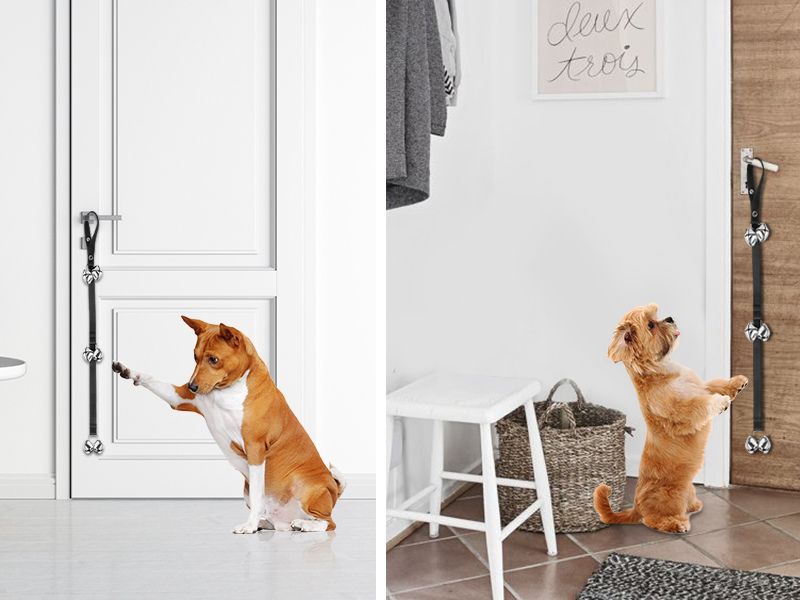
- Help dog potty training: Potty training bells can be effective for bell training puppies when you ring the bell to take your dog to the potty spot. Day by day, your pup will get used to ringing the bell on its own to signal when they need to go out.
- Promote communication: A potty bell for training encourages communication between you and your pup. By responding to the bell ring, you satisfy needs and build a stronger bond with your pups.
- Provide consistent training: A puppy needs a routine, especially bathroom breaks. Dog potty bells can help establish a routine and provide a healthy and balanced environment for your dog’s daily activities.
- Reduce accidents: Using the potty training bells as a signal for potty time can reduce unwanted accidents in the house.
- Improves good behavior: A potty bell-training puppy can also improve your dog’s behavior by indicating when to go outside or potty. This can help reduce anxiety and prevent destructive behavior.
How A Potty Bell Works
Like a dog doorbell, a dog rings bell to go outside all the time or relieve itself in the bathroom. Moreover, a potty bell is an excellent item for your pup to associate ringing the bell with going outdoors.
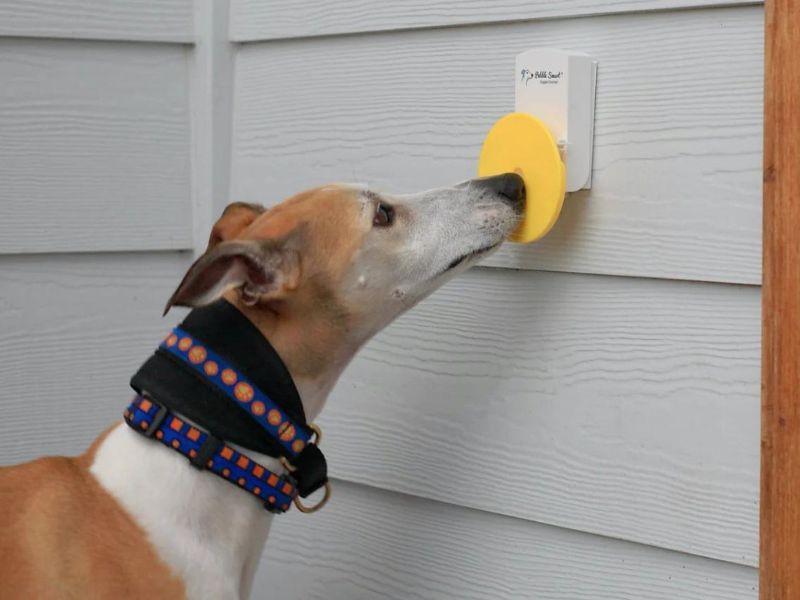
In addition, your potty bell will hang on the most frequently used place, such as the door, to allow your pup out for potty breaks. Dog rings bell to go outside all the time with their nose or paw.
Moreover, the reward or treat is essential to verbally praise the dog’s effort. It can be beneficial if you have the time and patience to teach your dog. Potty bell training puppy may be a pleasant and rewarding experience for you and your pup.

Notable thing: Ringing the bell is the first step in training, so you should not rely too much on toilet bells. In the early stages of potty training your puppy, you should make it a good experience for your dog to go to the bathroom outside.
>>>Make sure your dog’s mastered potty training before using the bell! Check out the comprehensive guide to potty train your dog!
How to Teach A Dog Rings Bell For Potty Training: Three Step Process
As mentioned above, bell ringing is the first step in bell training for dogs. So teaching a dog to ring the bells using a treat or a “touch” is easy. Hence, with consistent practice, the dog rings bell to go outside all the time for potty time. In addition, following these three steps will give you perfect outcomes.
Step 1: Introduce the bell or button to your dog.
The dog bells for potty training can begin when the bell is chosen, and the treats are ready in your hand.

Dog potty bell training starts with a “touch” cue by responding to the bell. If you have bells that dangle from a hook or doorbell, dab a small piece of cheese or a soft treat on the bell to encourage your dog to touch it with its nose or paw. Once your puppy touches the bell, it will become accustomed to hearing it ring.
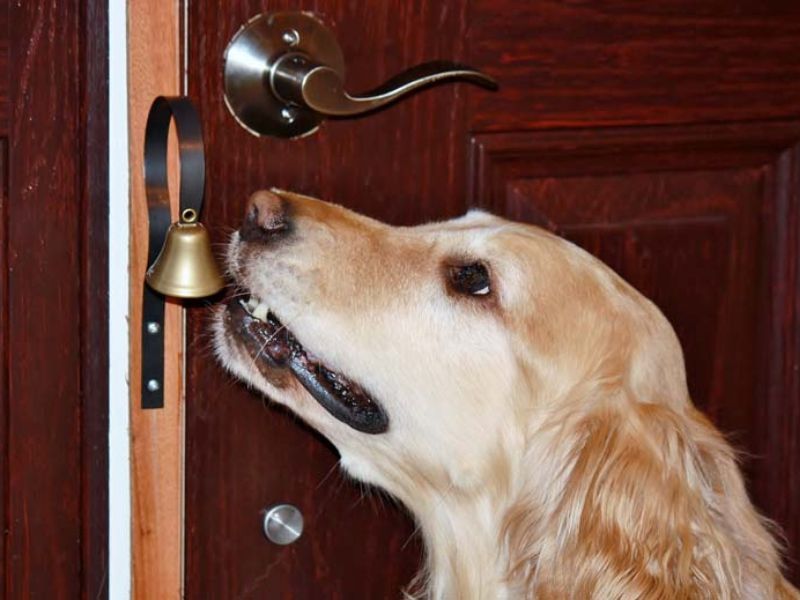
Next, you can use the command “touch” to reward your dog for touching the bell with the dog’s nose. Immediately click your clicker, say “Yes!” or “Go potty,” and reward it with a treat if your pup touches the bell.
Repeat this step until your pup consistently rings the bell when you say “touch.” Then, gradually increase the distance that the bell is from your dog’s nose.
Pro tips:
You need to choose dog training bells for potty that are loud enough to hear when your puppy rings the bell.
The potty training bells should be hung at the “potty door” at your dog’s eye level.
Step 2: Place the bell or button near the most frequently used door to take your dog to the potty spot.
Once your puppy has mastered the “touch” command, move on to the next step by placing the potty bell on the doorknob of the most used door. Or you can hang it on the wall or doorframe.
Next, call your dog and start holding the bell as close to your dog as possible, and then gradually release your hand from the bell. When your puppy touches the bell with its nose or paw, it will understand the “touch” action.

Then give it a treat or say “Yes” or “Let’s go potty outside” to praise your dog. Always take your puppy on a leash to the same potty area.
Repeat until your dog consistently rings the bell when you point at it and say, “Touch” or “Go potty outside.”
Pro tip:
An electronic dog doorbell is an excellent solution for households with puppies that dislike jingle bells.
Step 3: Teach your pup to ring the bell to go out.
Once your puppies get used to ringing the bell on command, teach them to use it solely when they need to go outside. Instead of using a treat to entice your dog’s nose over to the potty bells, use the potty bells and gesture toward them before taking it outdoors.

Give a reward to your puppy whenever you hear the bell rung, and the door should be opened to get outside.
Repeat “Go Potty” and treat your dog after your pup’s done using the bathroom.
Be consistent and patient; you and your dog will quickly master dog bells for potty training.
Potty Bell Training Pro Tips
Here is some advice from a professional dog trainer we’ve picked up along the dog bell for training:
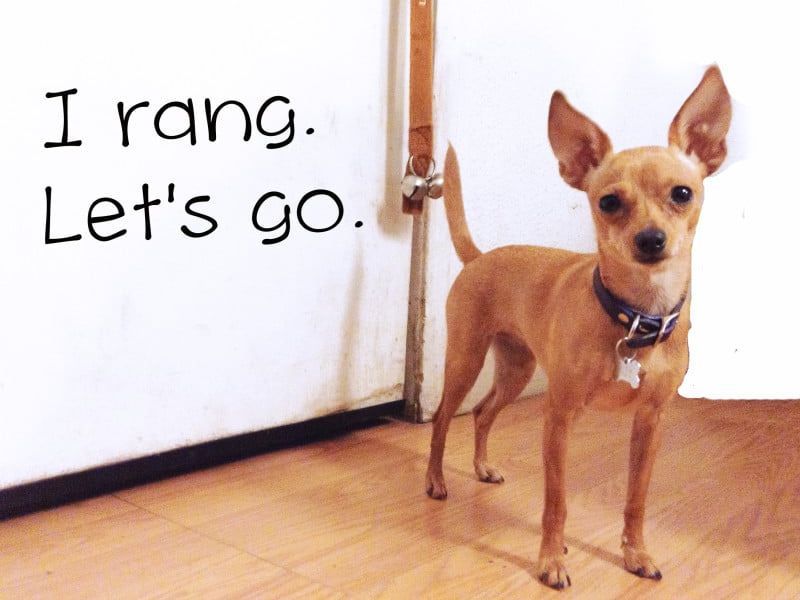
Start with positive reinforcement: When your dog rings the bell, praise them and give them a treat. This will help them associate ringing the bell with a positive experience.
Be consistent: Use the same door, bell, and potty area when taking your dog outside. This consistency will help your dog learn what ringing the bell means.
Start slow: If your dog doesn’t understand the bell for the first tray, start ringing it yourself before taking them outside. Eventually, they should associate the sound of the bell with going out.
Be patient: Bell training for dogs can take some time, so don’t get discouraged if your puppy doesn’t catch on immediately. Keep up with the positive reinforcement and consistency; your dog should eventually get used to hearing the bell ring.
Don’t overuse the bell: Only use it when it’s time for your dog to go outside to potty. If you use the bell for other reasons, your dog may become confused and stop associating the bell with potty time.
Gradually remove the treats: Once your dog consistently rings the bell to go outside, you can gradually reduce the treats you give them. Eventually, they should be able to ring the bell without needing treats.
Use a consistent command: Teach your dog a specific command to associate with going potty, such as “go potty” or “go outside.” This will help your puppy understand what you want it to do when you take it outside.
What Kind Of Dog Potty Bell Should I Use For Training?
Like a doorbell, potty bells will teach your dog to ring when it’s time to go outside to relieve itself. There are several different types of potty training bells available, including:
- Service Desk or Courtesy Bells

Your puppy can alert you that it needs to use the bathroom by tapping the courtesy desk dog doorbell. You can place it on the floor beside the door.
- Hanging Dog Bells with Adjustable Strap
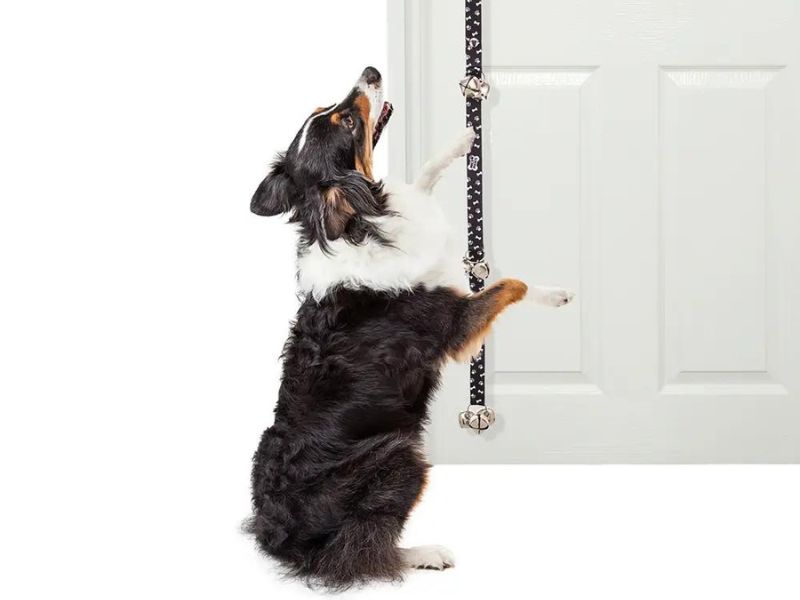
Hanging dog bells are quite practical, as they can be hung from any door handle and may be modified as your puppy grows. These potty training bells are durable, easy for puppies to learn to ring, and loud enough for you to hear across the room.
- Classic jingle bells
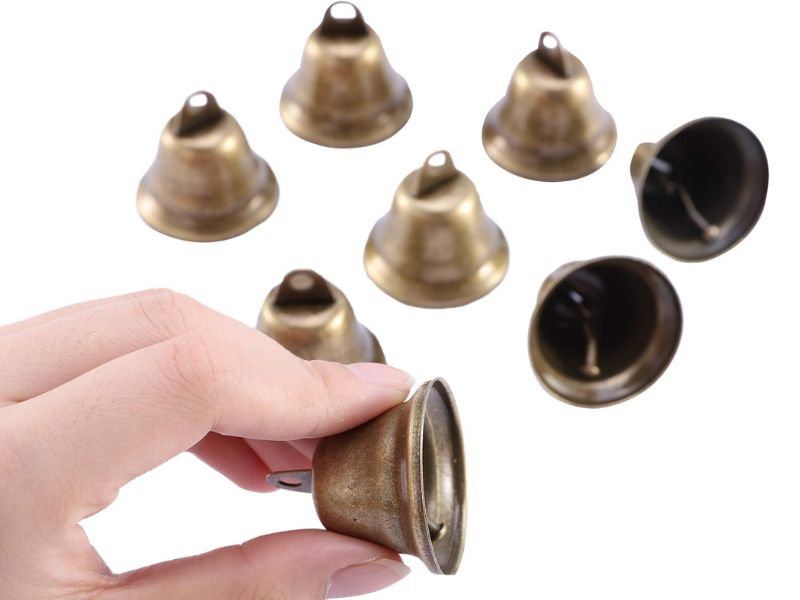
A string of classic jingle bells is a popular choice to potty train your puppy. These bells are easy to find and come in various sizes and materials.
- Bells with buttons
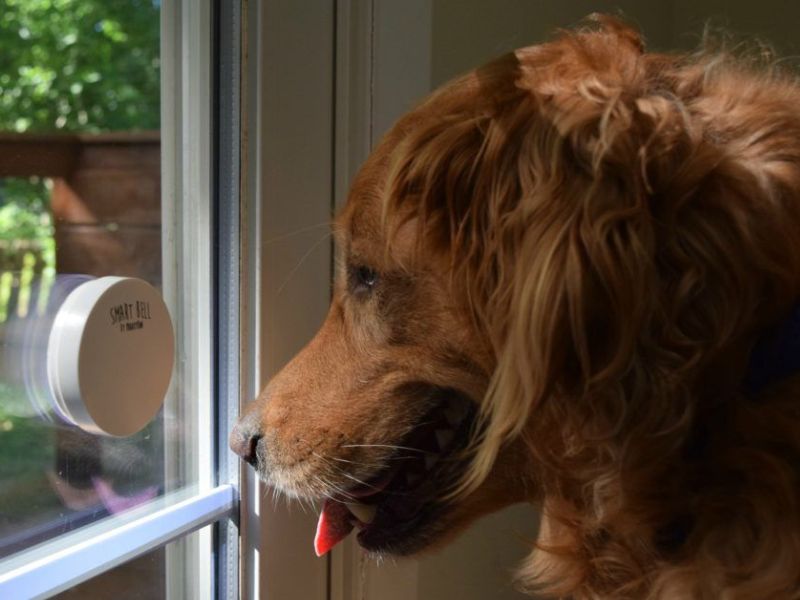
This dog potty bell has buttons you can press to make a noise. This can be helpful for dogs that are hesitant to touch or interact with jingle bells.
- Motion-activated bells

These potty bells will ring when your dog touches them or walks past them, which can be helpful if you’re not always in the same room as your dog.
- Wall-mounted potty bell

Although these dog potty bells may seem stylish, wall-mounted housetraining bells aren’t useful. These bells must be screwed to the wall and raised to the correct height. As your dog gets older and bigger, you’ll have to take the bell down and move it, leaving unsightly holes in your wall.
>>>Further reading:
- 10 Crate Games For Dogs to Keep Your Pup Happy & Entertained
- 5 Easily Steps For Crate Training For Dogs You Should Know
Bell training for dogs can be a useful tool for both potty training and communication. It’s possible to avoid dog accidents inside the house if you take the time to teach your dog to ring the bell to signal when it needs to go outside. Using the Canvas Personalized tips, you can train your pet and strengthen your relationship using dog potty bells.



